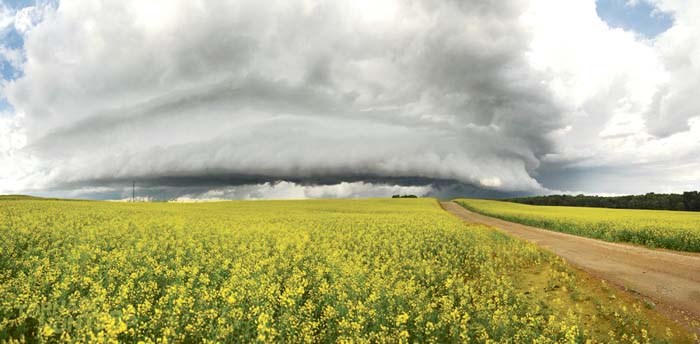You get out of that box... somehow change your perspective out of that ugly, boring box, photos go instantly from snap shots to photographs.
— Greg Johnson
Photography has taken Greg Johnson a long way, from an advertising boardroom to his own reality TV series.
Regina’s “Tornado Hunter” was in Yorkton last week imparting some of his knowledge and experience behind the lens to an eager group of amateurs hoping to turn their snap shots into art.
Johnson left behind the suits and desks for a raincoat and a pickup truck a decade ago when he decided it was time to devote all his time to his passion for chasing and documenting severe weather. In the off season, from about September to March, he travels around as a motivational speaker and photography instructor.
The main obstacle for a lot of people, he says, is getting comfortable with the equipment.
“The biggest thing for me, and for any photographer really, is simplifying the camera,” he said. “These are really technical pieces of equipment with lots of bells and whistles and dohickeys and knobs and everything.
“It can be pretty overwhelming and most people give it a go and then end up throwing it on auto and they’ve invested a good chunk of money into something they’re really not using to its full potential. If [I} can break it down, simplify it and make it easy and fun, I find that people can get more value out their camera and enjoy it more.”
Yorkton is a regular stop for him. This year he did two sold out workshops at the Western Development Museum.
“I seem to get to Yorkton every fall because there’s a lot of demand for it and it’s a lot of fun,” he said. “I think at the end of the day everybody is fascinated with photography. It’s what I call the scrap book of our lives. Whether it’s a community’s history, whether it’s historical images of your business, everybody sort of has that scrap book of their life. Being able to use photography as a creative outlet I think is a really cool thing for a lot of people.
While learning to take advantage of the equipment is critical, Johnson notes there is a simple lesson that can instantly improve any photographer’s work.
“If I only have 10 to 15 minutes with to sort of impart whatever knowledge I can and I can only teach them one thing, the thing that I am talking about is something we call perspective,” he explained.
“We all walk around every day and in our car, whether we’re walking, whether we’re sitting at our desk, we spend the whole day with our eyeballs from about three-and-a-half feet to about six feet, that’s where everybody’s eyeballs are every day all day. And whenever we take a photo from within that box, it’s boring, that’s the golden rule.
“You get out of that box, you get high, get the camera down against the ground shooting up, somehow change your perspective out of that ugly, boring box, photos go instantly from snap shots to photographs.”
And, he says, there is hope for any one who takes the time to learn.
“Photography is one of those things that it’s hard to be creative and imaginative and get your camera to do what you want to do until you technically understand how it works,” he said. “I like to say photography is one of those skills that require both sides of the brain. We all get into it because of the creative side. We all want to create and make interesting things, but unless we have the required technical skills, we can’t do it.
“So, I think they’re both equally important and I think both can be taught. I think a lot of people believe there’s such a thing as having an eye for photography, that some people are just good at it. That’s just not true. I’ve seen it a million times where people show up and they have a brand new camera, they don’t even know how to turn it on, and a few months later they’re sending me photos and they’re gorgeous.”




